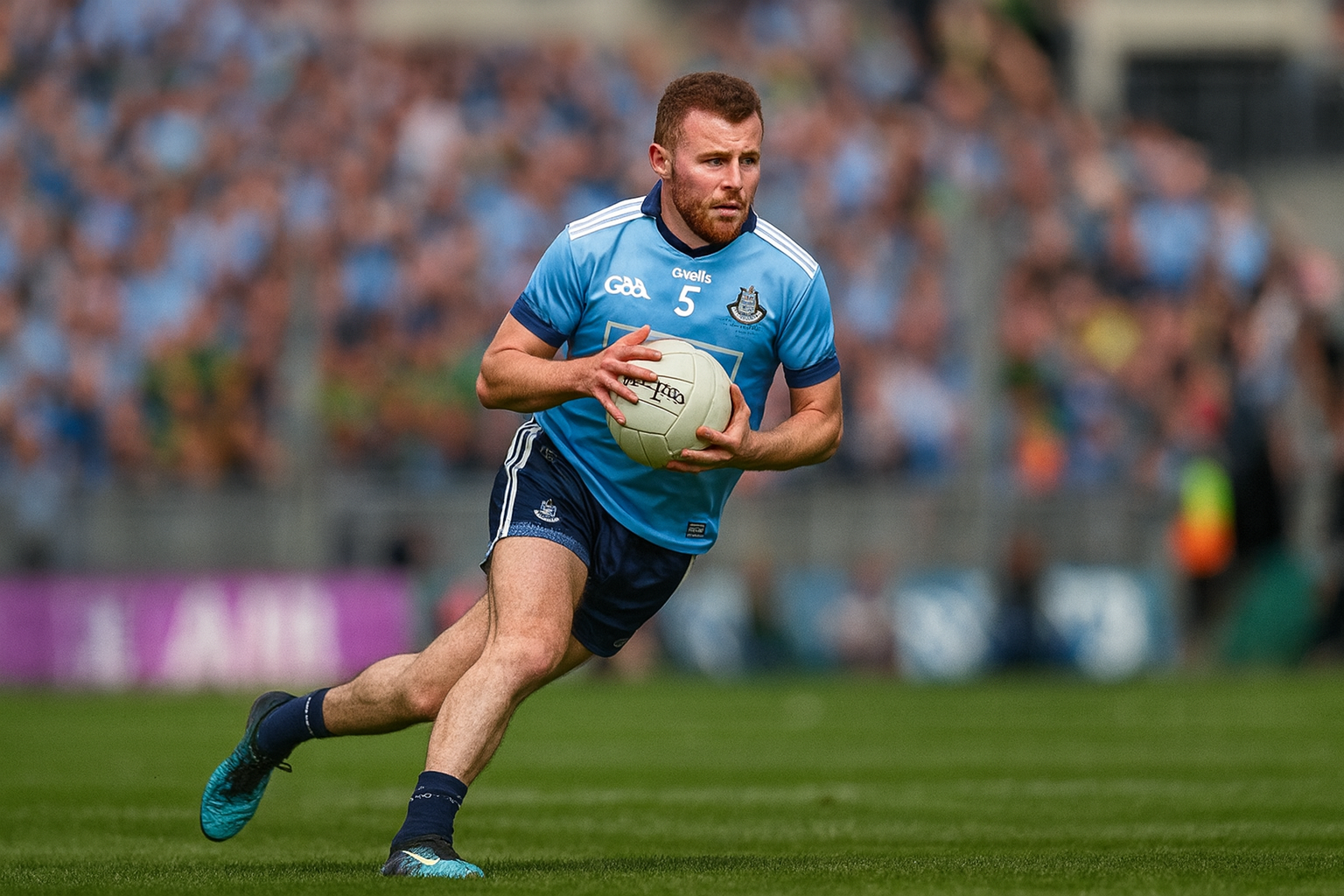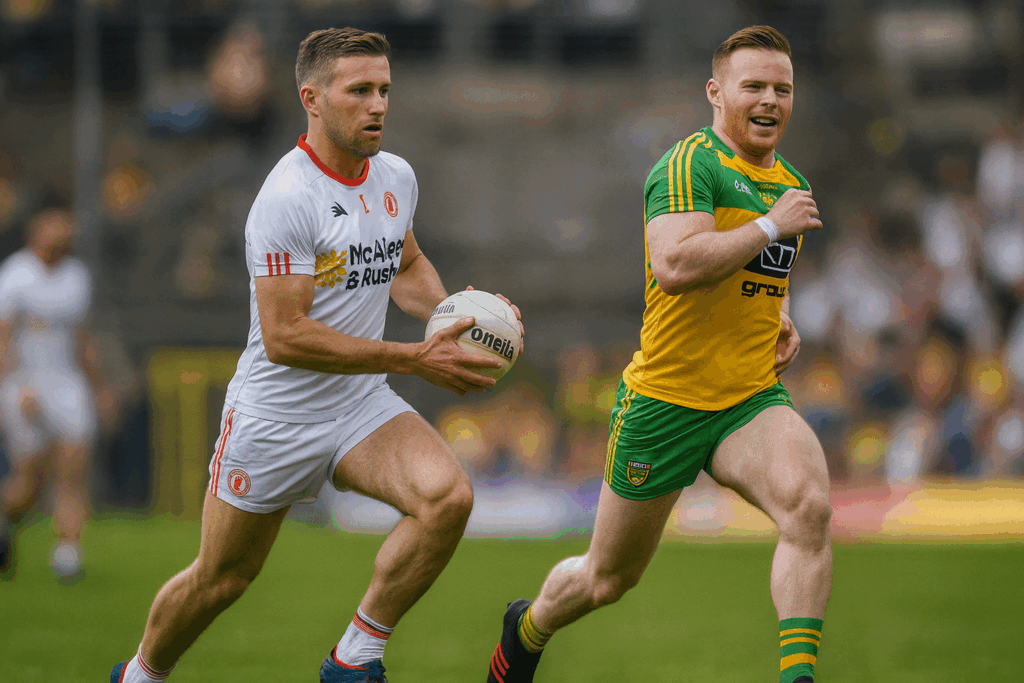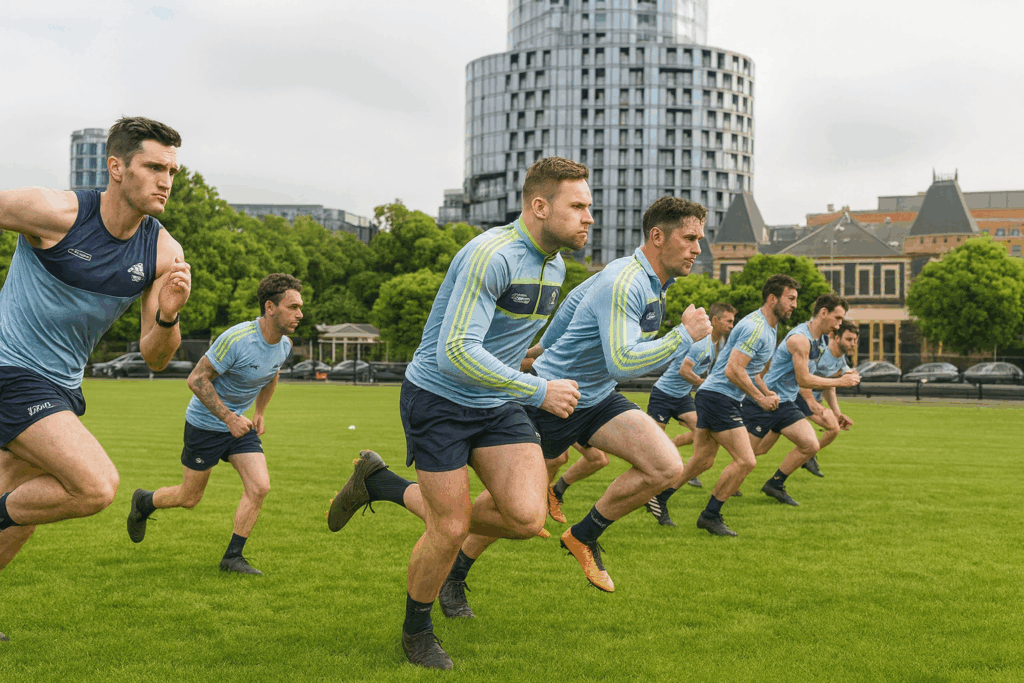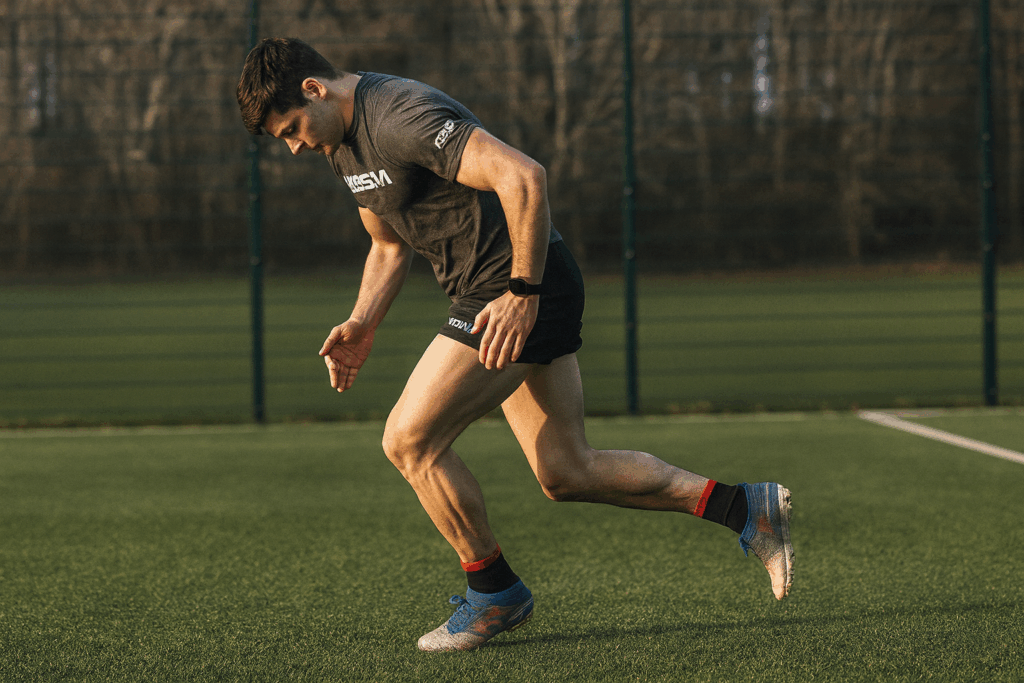Introduction
Gaelic football is a high-paced team-based invasion game that demands players to execute skills at speed as the play continuously evolves. To excel at this level, athletes must understand the physical demands of the game. This blog explores a study on match running performance in elite Gaelic football, providing insights into the physical requirements of the sport and what it takes to perform at the highest level.
Who Was Tested?
The study monitored 50 inter-county Gaelic football players across two seasons, encompassing the National Football League and the All-Ireland Championship series. Players wore GPS devices to gather detailed data on their in-game physical performance. A total of 212 data samples were analysed, providing a robust dataset for evaluating match demands.
What Was Measured?
The study utilised GPS technology to collect performance metrics, including:
- Total Distance Covered: The overall distance players ran during a match.
- High-Speed Running Distance: Distance covered at speeds of 17 km/h or more.
- Sprint Distance: Distance covered at sprinting speeds of 22 km/h or more.
- Peak Velocity: The maximum speed a player reached during a match.
- Mean Velocity: The average speed maintained throughout the game.
- Accelerations: The number of rapid increases in speed.
Performance data was also analysed by player positions, highlighting how physical demands differ based on roles within the team.
What Did They Find?
Overall Performance Metrics:
- Total Distance Covered: On average, players ran 8,160m per game.
- High-Speed Running Distance: Players averaged 1,731m at speeds ≥17 km/h.
- Sprint Distance: An average of 445m was covered across 40 sprints per game.
- Accelerations: Players performed approximately 184 accelerations per game.
- Peak Velocity: Players reached a peak speed of 30.3 km/h.
- Mean Velocity: The average speed was 6.5 km/h.
Position-Specific Insights:
- Midfielders: Covered the greatest total distance per game, reflecting their central role in both attack and defence.
- Half-Backs and Half-Forwards: Logged higher high-speed running and sprint distances compared to full-backs and full-forwards.
- Full-Forwards: Performed the fewest accelerations, suggesting less movement variability compared to other positions.
- Midfielders and Half-Backs: Performed the highest number of accelerations, indicative of their frequent involvement in dynamic play.
Implications for Players
Understanding the Demands of Elite Play
This data highlights the physical benchmarks required to compete at the highest level of Gaelic football. Whether you’re a midfielder expected to cover vast distances or a full-forward focused on sprinting bursts, these metrics provide a clear picture of position-specific demands.
Use Technology to Track and Compare Performance
If you have access to GPS tracking technology, such as the Apex Athlete GPS Performance Tracker from StatSport, you can benchmark your own performance against the data from elite players. Key metrics like total distance, high-speed running, and sprint counts offer invaluable feedback for personal development.
How This Can Inform Your Training
1. Train for Your Position
Understanding your role on the field allows you to tailor your training to match the demands of your position:
- Midfielders: Focus on endurance training and maintaining a high aerobic base.
- Half-Backs and Half-Forwards: Emphasise high-speed running and sprint intervals.
- Full-Forwards: Work on explosive accelerations and sprint bursts for short distances.
2. Incorporate Game-Specific Drills
Your training should mimic the intensity and movements of a match to maximise adaptation. For example:
- Sprint intervals with directional changes.
- Acceleration drills combined with ball-handling skills.
- High-intensity small-sided games to replicate match scenarios.
3. Focus on Recovery
The high-intensity nature of Gaelic football requires a focus on recovery strategies, including active recovery, proper nutrition, and sleep, to maintain performance levels throughout the season.
4. Set Measurable Goals
Use metrics like those in the study to set specific, measurable targets for improvement. For example:
- Increase total distance covered to 9,000m per game.
- Achieve a high-speed running distance of 2,000m.
- Improve sprint distance to 500m across 45 sprints per game.
Conclusion
Match running performance in Gaelic football is a blend of endurance, speed, and acceleration. This study provides a valuable benchmark for understanding the physical demands of the sport at an elite level. By tailoring your training to reflect your position’s unique requirements, using technology to track your progress, and focusing on recovery, you can elevate your performance and compete at your best.
Whether you’re aiming to improve your fitness or make an impact at the elite level, aligning your training with the demands of the game is essential for success.





